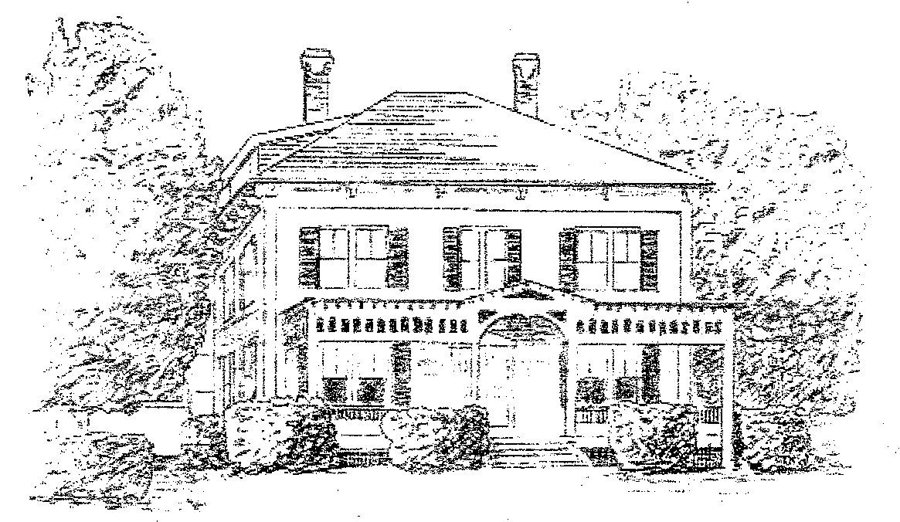Disclaimer
The Dover Public Library website offers public access to a wide range of information, including historical materials that are products of their particular times, and may contain values, language or stereotypes that would now be deemed insensitive, inappropriate or factually inaccurate. However, these records reflect the shared attitudes and values of the community from which they were collected and thus constitute an important social record.
The materials contained in the collection do not represent the opinions of the City of Dover, or the Dover Public Library.
1999 Heritage Walking Tour
Heritage Walking Tour Booklet October 1999 by the Dover Heritage Group, Dover, NH, c. 1999.
In 1978, a group called Dover Tomorrow formed to promote the growth and prosperity of Dover. A subcommittee was tasked with promoting “appreciation of Dover’s heritage”. The Lively City Committee created the first Heritage Walk the next year. It was so popular that new tours were created every year, and held through 2007. By 1982, Dover’s historical society, the Northam Colonists, had taken over the research and creation of the Heritage Walking Tour Booklets. The information on the page below is a transcription of the original Heritage Walking Tour Booklet. The Library has a complete set of the Heritage Walking Tours if you would like to see the original booklets.
THE ABBOTT/ROSS MANSION – 10 ARCH STREET
The start of this year’s Heritage Walking Tour is the Abbott/Ross mansion shown above. At one time it was called the “the handsomest house in the city”. Read its history in this brochure.
This tour will highlight neighborhood histories of Lexington, West Concord and Richmond Streets with portions of Arch, Silver and Washington Streets.
10 ARCH STREET
At one time called the handsomest house in the city, the Abbott/Ross mansion is currently divided into apartments. The large estate was constructed ca. 1887 by Isaac F. Abbott, cashier of the Dover National Bank. Abbott was born in Dover in 1842 and started his career as a clerk in D. Lothrop’s. He worked as a bookkeeper for the bank and rose to become head financial officer. When he assumed this position in 1888, Abbott’s salary was $3000 per year and many locals questioned how he could afford such a magnificent house. Abbott let on that his wife’s family had left her a considerable fortune.
Wife Lizzie Abbot died in 1892 leaving Isaac to care for his children Bert, Cushman, and Clara. Abbott continued work at the Dover National Bank and the home’s expenses continued to rise. One newspaper account of the time said, “The buildings outside were substantial but do not give any indication of the prince-like furnishings inside. Elegant furniture, costly draperies, carpets that give back no sound after a footfall, make every room handsome in the extreme.”
Then in 1895, Dover was stunned. State bank examiners discovered major discrepancies in the bank’s accounting records. Over $80,000 was missing and Isaac Abbott became the chief suspect. Headlines in the newspaper speculated that it was the bank’s money, not Lizzie’s supposed inheritance,that had built the mansion. On January 14, 1895, just before officers could arrest him, Isaac Abbott went to an upstairs bedroom and fatally shot himself.
The Dover National Bank was in dire financial straits. Able to pay its panicked depositors only $.50 - $.60 on the dollar, the bank went into receivership and soon closed. In 1901, an Isaac Abbott estate plan was devised to recoup some of the embezzled funds. The plan showed a new street to be developed here perpendicular to Arch Street, and twenty new house lots in Abbott Field. But this plan never materialized and the home was sold in 1907 to Lincoln K. Ross who owned a ladies furnishings and corset store at 376 Central Avenue. After Ross’ death in the mid-40’s, his widow Grace lived here to the late 60’s. After Mrs. Ross’ death, her attorney Alfred Catalfo, Jr. purchased the house. The house was then sold to Mr. and Mrs. Richard Dolbeck of Massachusetts as rental property. In 1992, the house was sold again to Harry Terk Williams (owner of Shyhaven Aviation LTD in Rochester) who currently resides there.
9 ARCH STREET
In 1885, Levi Elder sold this land to Lyman Parsons, a carpenter, for $200, and by 1888 the Parsons family was living here. Lyman died in 1891, his wife Elizabeth in 1912, but the home remained in the Parsons family through daughter Myra and grandsons Leo and Bernard until 1971. It was then purchased by the Peschke family and later owned by Bernard F. Ryder.
8 ARCH STREET
This house was probably built by Paul E. Harrison, a consulting engineer who bought the lot in 1935 from Lincoln Ross who lived next door at No. 10.
In 1944, the family of William Carswell, the owner of Carswell Auto Parts, bought the property and lived here until 1960 when they sold it George Jaques. There were two other owners in the 60’s before William Head, Industrial Relations Mgr. at Kidder Press Co. bought the house in 1968 and lived here for 15 years. Mr. Head sold the property to Martin Hagerty in 1983.
2 ARCH STREET
Built on land originally belonging to the Abbott Estate, this home, ca. 1817, has had five owners. The land was purchased at the turn of the century by Walter Chesley who sold it in 1903 to Charles and Adah Canney. The lot was bought in 1915 by Clarence and Ella Reyes and the house was built soon after. In 1943, Bessie Maguire paid $2500 for the property and sold it two years later to Joseph and Winifred Moore. Elton T. Vigent bought it in 1960 and sold it in 1987 to Larry and Patricia Tatro.
141 & 143 SILVER STREET
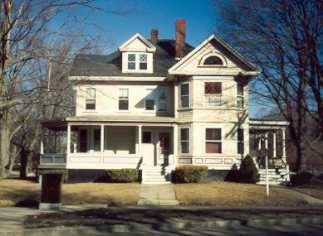
In 1865 John Laskey bought 4 acres at the corner of Silver and Coffin Streets including a 9-room house (now 137 Silver Street) from the Towle family. Two years later Mr. Laskey sold the property to Luther Burlingame, the publisher of the Morning Star newspaper, who lived here for about 12 years and then sold the property to Levi Elder. Mr. Elder, a stone cutter, lived here until his death in 1887, and his widow Mary lived here for additional 20 years.
In 1904, Mary Elder sold a lot on the corner to Edwin I. Burnham who built the house that is now 141 & 143 Silver Street. The Burham family lived there until 1950 when Edith Burnham, the daughter of Edwin, sold the property to Burns, Inc. and it became rental property until Molly O’Gara bought the house in 1964 and lived here for about 10 years.
140 SILVER STREET
Herbert Towle acquired this land from Almanzor Towle in 1901. At that time there were no buildings on the land which was described as Lots 1 and 2 on plan of Towle Field. In 1905 Herbert Towle was listed as living here so he probably built the house.
In 1938 Louise Towle, the widow of Herbert and the administrator of his estate sold the property to Adelard Bernard, the proprietor of Bernard’s Millinary, who lived next door at No. 136. The Bernards did not live here but rented the house to others.
In 1947, the property was purchased by John and Ida Randall who lived here about 4 years before selling to Walter Huber, the Chief Tool Designer at Clarostat Mfg. Co.
137 SILVER STREET
The little house amid the larger Victorian homes that characterize much of Silver Street has actually 9 good-sized rooms, connects to a country barn, and sits on almost an acre and a half of city-proper land.
Present owner Myrtle A. Allen, for 45 years a well-known teacher in local schools, acquired the property in 1955 from Ralph and Nancy Fritch. The house was built during the Civil War after Robert Towle deeded land to Almanzor Towle in 1860. Land with buildings were sold in 1865 to painter John Laskey, and in 1871 to L.R. Burlingame, publisher of the Morning Star newspaper. Prior to Allen occupation, the home was owned by the Elder, Bascom, Morris and Fritch families, all of whom continued to upgrade the property. Myrtle Allen restored the wide-board pine floors and landscaped the yard including the beautiful red-leafed oriental maple on the front lawn.
136 SILVER STREET
Michael and Tess McDonnell purchased this home in 1983 from Karl Friese. Mr. Friese bought it in 1955 from Bernadette J. Bernard, owner of Bernard’s Millinery, and the present owners report they still find an occasional hat pin in the attic. Mrs. Bernard acquired the home in 1929 from Adelaide F. Corson and Mildred T. Peabody. Adelaide was the granddaughter of Almanzor Towle, an earlier owner of lots of real estate here. In 1926, Annie M. Towle lived here: she was the widow of George F. Towle (1839-1920), Almanzor’s brother. From 1895-1919, the house was lived in by Fannie Z. Towle, Almanzor’s sister, and as early as 1859, John W. Towle, a farmer, lived at this location.
129 SILVER STREET

Owned since 1952 by the John Foley family, this home was standing before 1778. Most of the original home was destroyed in an 1825 fire, but it was rebuilt in 1826 by owner Elisha Woodbury. For many years it stood alone on Plum Pudding Hill (the high ground between Lexington and Arch in Dover City) and served as a tavern called Farmer’s Hotel with livery stables, a bowling green, and a carriage-roofed barn that has been preserved. Woodbury sold to Nathan Clark of Somersworth in 1832, and he, and his widow Mary Jane after him, ran Ye Clarke’s Tavern here until 1851. A large beech tree thrives now where the tavern was located and the Woodman Institute has possession of a lawn bowling ball from Clarke’s Tavern.
Robert Christy bought the property in 1851 and lived here nearly 40 years. The home then passed through several owners, being Victorianized somewhat during the 19th century. Several of the 8 fireplaces (5 of which still work) are decorated formally in imported Italian tile.
Around 1921, the Hopkins family sold the house to Charles and Caroline Eaton and the ell was extended and remodeled. A columned patio was added on the east side. The tavern fireplace in the kitchen was restored by the present owners in 1969, and a rare Camperdown elm still lives on the front lawn, imported long ago from Europe.
120 SILVER STREET
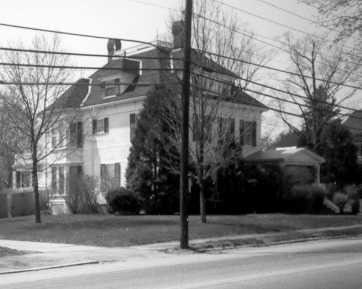
In 1889, Almanzor Towle sold this parcel of land to Thomas H. and Mary Dearborn and the home was built soon after. Dearborn (1860-1932) had owned a dry goods and department store in Dover since 1884. In 1909, he was also head of the N.H. Gipsey Moth Commission and by 1917, owner of The Fashion, a ladies garment store at 382 Central Avenue. For the last 8 years of his life he served as Dover’s postmaster.
Judson Dunaway, owner of Expello Corp. and Dover philanthropist, bought the house in 1946 from Mary Dearborn. Dunaway sold it in 1950 to Howard and Grace Mitchell. David C. Dopp acquired the house in 1969.
125-127 SILVER STREET

This lot, part of the Robert Christy estate until it was subdivided in 1895, was purchased by Sarah A. Ham Glass for her niece Mary Edith Richer Gallagher and her husband James. By 1897, the Gallaghers were occupying their new home here. In 1898, Mary Edith fell off a horse and died of peritonitis; James then sold the house in 1903 to Dwight Hall.
Mary Edith’s mother, Mary Abby Ham Ricker, bequeathed her estate for the construction of a memorial chapel in honor of her deceased daughter. Ricker Memorial Chapel, located in Pine Hill Cemetery, was completed in 1912.
In 1908, Dwight Hall sold the house to William Hall Roberts, Clerk of Court and direct descendant of one of Dover’s first settlers, Thomas Roberts. Mr. Roberts and Wife Lila Burgess had two children, Wade and Wilma. Wilma Roberts taught for many years at the Varney School and still resides in Dover.
116-118 SILVER STREET
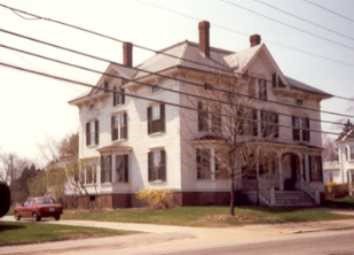
This duplex was built ca. 1888 on land originally owned by John J. Hanson. The home was constructed for two Hanson daughters, one of whom. Alice (1858-1932), became Mrs. Charles H. Farnham. Farnham (1855-1935) was the owner of Lothrops, Farnham Clothing Company until his death. Harry L. Farnham (who took over operation of the store after his father’s death) continued to live at #116 until his 1972 death.
The carriage house behind #114 and this duplex was built to house John J. Hanson’s horses; and the families also kept pigs in the cellar there. Whenever there was heavy rainfall, the basement would flood and the pigs would drown. So a drainage system was installed and the cisterns and wells still exist behind the properties. The system was very well designed as present owners of #114 report that the cellar is very dry and the backyard gardens have excellent drainage.
117 SILVER STREET
In 1861, Samuel Fisher bought this land from Thomas H. Cushing and in 1865-66, Fisher sold this lot at the corner of Silver and Lexington (then called Prospect St.) to Joshua Hall. The house was built between 1865 and 1871.
Joshua G. Hall (1828-1898), Dartmouth graduate, was admitted to the N.H. Bar in 1855. He resided in Dover from 1857 until his death. During his illustrious career he served as county and city solicitor, Mayor of Dover, State Senator and Representative to the General Court, U.S. Attorney for N.H., and member of the 46th and 47th Congresses of the U.S.
Dwight Hale Hall (1871-1963), Joshua’s only son, inherited this home and carried on his father’s legal practice. He too graduated from Dartmouth; Dwight was admitted to the N.H. Bar in 1897. After his death in 1963, the home was left to his sister Susan’s children, Jonathan Sawyer and Elizabeth B. Sawyer. It was later owned by another Dover attorney, Anthony McManus, in the 1960’s, but in the 1980’s was converted to condominiums. This development upset abutters and led to the rezoning of this area so that no more such conversions occur.
114 SILVER STREET
Karen and Richard Moore purchased this home in 1984 from The Reilly family who bought it in 1982 from Mr. and Mrs. Thomas Smith. The Smiths had owned the house for about 25 years, acquiring it from the Christiansen family.
The house dates from ca. 1760-1780, and was originally occupied by N. Watson, a farmer who operated a tavern here. Later, a Mr. Bickford ran a tavern/hostelry here and coaches on the road from Boston to Concord stopped here. Mr. Bickford sold the home to John J. Hanson (1826-1894) ca. 1871 and Hanson’s children, Frank W. (1865-1918) and Carrie L. (1861-1933) inherited the house. Later, Lois Hanson (1907-1946) married Ernest Christensen, an athletic coach at UNH.
The Christensens made many changes in the house; the morning room was taken out, doors, stairways and windows were rearranged, and the outside chimney and fireplace were added. The home’s cellar has a partial tunnel that once led to the duplex next door at #116-118. The property was farmed and there was an orchard and several outbuildings connected to the house. What appears to be a center chimney is in fact a split chimney that goes up either side of the main staircase and rejoins in the attic to form one main stack.
Lexington Street. Notice how wide Lexington Street is. It also has brick sidewalks rather than the usual paved sidewalks. This was designed to be an elegant area to live.
34-36 Lexington Street
William Cartland, who owned Cartland Grocery on Locust Street, owned a number of properties in Dover in the late 19th and early 20th century, including this. He sold it to Mark Chase in 1919. It was 2 apartments by 1938, with Chase’s widow Alice living in #36. Carroll and Ruth Fellows bought it from the Chase estate in 1942. Carroll served as Chair of the Strafford County Commission and Chair of the Strafford County Home. Following his death in 1975, the property has had a succession of owners.
35 Lexington Street
In October of 1869 Eli V. Brewster bought 12 lots from the heirs of Thomas H. Cushing, including four adjoining lots on the West side of Prospect Street (now Lexington St.) This lot, which is now 35 Lexington, was the most southerly of the four lots. In 1870, Brewster sold this lot to Abram Ward who died shortly thereafter. Martha Demeritt purchased the lot from the Ward estate in 1873, and she and her husband James Y. Demeritt built this house. Mr. Demeritt was an auctioneer & appraiser and also ran a commission store on Washington Street. Mr. Demeritt was also the administrator of the estate of Isaac Abbott, the man who shot himself at 10 Arch Street (See 10 Arch’s entry).
James Y. Demeritt died in 1913, but his widow Martha and son Fred W. Demeritt, who ran a grocery store in Ocean Park, ME., lived here until 1927 when they moved to Maine. The house remained in the Demeritt family until 1954 when it was sold to Sarah Brown, wife of Lewis K. Brown, a welder at the Portsmouth Naval Shipyard. Two years later the Browns sold it to George J. Hester, Jr. who started as a patrolman with the Dover Police Department and worked up to a position of detective with the NH State Police. The Hester Family was her until 1984.
32 Lexington Street
James and Eliza Bunker sold this land to Bartholomew and Maria Rich in November, 1872. Bartholomew owned a fish and meat market at 3 Locust Street. They sold the property in March of the next year to Hannah Hobbs, wife of George Hobbs, a carpenter. They built the house (the first of four Hobbs built on the street: #32, #30, #28, and #31-33; note the similarities in these houses) and lived here until selling to Mary L. Walker of South Berwick in 1898.
In 1920, Fred Varney, owner of Varney Cleaners, bought the house. The property passed to his son, Fred. Jr., and then out of the family in 1965. It has had five more owners since then (Ramon and Corrine Quigley, Willis and Barbara Reed, Antero and Nancy Parssinen, Joseph and Jean Vitko, Anthony and Linda Palmer).
31 & 33 Lexington Street
This lot was also part of the land which Eli Brewster purchased from the Cushing Estate in 1869. In 1879 Mr. Brewster sold the lot to George Hobbs who lived across the street at #32. George Hobbs built his house and still owned it when he died in 1895.
From the time the house was built until 1946 there were a number of owners but none of them lived in the house. Other owners were: James W. Hobbs, son of George, Edwin A. Gowen, Thomas Webb, John F. Tirrell and Charles Hayes. Scott Caswell lived here for about 10 years before he bought the house at 19 and 21 Lexington Street.
In 1946 Charles Hayes sold the property to one of his tenants, Lloyd Plummer, who had been living at #31 since 1936. At that time Louie Rollins, general contractor, had been living at #33 for 25 years, and continued to live here until his death in 1963. Mr. Plummer died a few years ago and his widow sold the property to Philip Pohlmeyer of Exeter.
28 & 30 Lexington Street
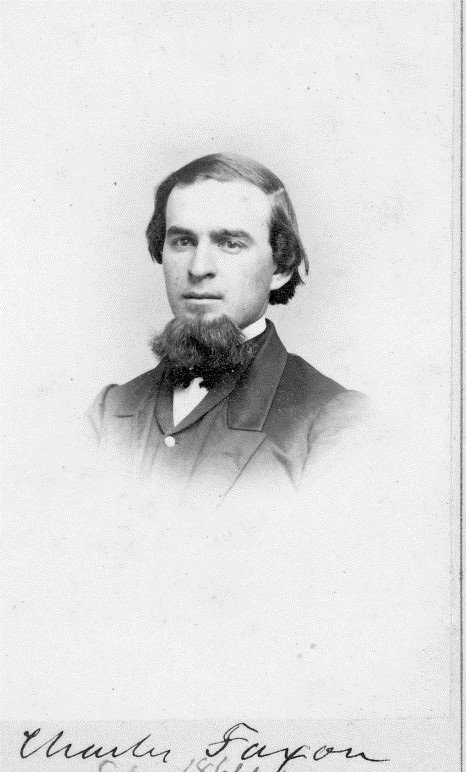
Charles and Ellen Faxon bought this land for $540 in March of 1873 from James Bunker, a hay dealer. It was sold by the Faxons to Nathaniel C. Hobbs of Berwick for $820 four months later. The deed includes the land and all of the cellar and underpinning stones now on said. Nathaniel was a farmer and assessor. He and his wife Elmira turned the house over to William and Lizzie Hobbs in 1888 on the condition that Nathaniel and Elmira shall furnish a home to said Grantor and wife in the house upon the property. William was still living in the house in 1909, working as a farmer. By 1912, he had moved to Eliot, Maine. He sold the property to Gertrude Wilson in 1920. She converted it to 2 apartments after his death and continued to live at #30 until she moved to Green Pastures Nursing Home in 1958. Upon her death that year, the property was sold to current owners, William and Nickolet Hayes.
26 Lexington Street
This is the new house on the street, built in the late 1940’s by Bridge and Olive Rowell, who bought the land from Hubert Reynolds in 1945. Rob and Ruth Knowles bought the house from Olive in 1978. Ruth still lives here.
23 Lexington Street
In 1889 Augustus Burwell bought this lot from Elizabeth Stevens. Augustus was a partner in the coal, grain and fruit business with Rufus Haley. His wife was Mr. Haley’s sister, Martha. Augustus Burwell died Oct. 14, 1892 when his legs were cut off by a train after he had collapsed on the railroad bridge while crossing from the station to Washington Street. He was a veteran of the civil war. His wife Martha inherited the house but, she died in 1899. She left the house to her son Arthur A. Burwell, who at the time, was a shoemaker but later worked as a clerk in the post office for 25 years.
At some time between 1899 and 1905 a second house was built on the back of the lot which became 4 W. Concord Street. Mr. Burwell is listed as living at 4 W. Concord Street in 1905 & 1909. In Aug. 1918 Mr. Burwell divided the lot and sold 4 W. Concord Street to Elwill Shortridge. The following spring Mr. Shortridge bought the next lot south on Lexington Street from Ida Gilman. Ida had owned the lot since 1878 but had never built on it.
In 1944, Laura Burwell sold the property to Henry Hermer a local shoe manufacturer and at the same time Mr. Hermer bought part of the lot next south from Mr. Shortridge. The Hermers lived here for 30 years and then sold to David Grice, an employee of Moore Business Forms.
West Concord Street
West Concord Street may have had its origins around September, 1880 when Levi and Mary Elder, residents of 137 Silver Street, began selling land on a proposed street to run between Lexington and Arch. Levi Elder was a stonecutter in business with Stephen W. George on River Street. Their advertisements in 1886 promised quality monuments, tablets, building and cemetery work from Concord, Quincy, Westerly, Durham, Rochester, and all other New England Granites. The firm of Elder and George will call upon at residences with designs and samples. Levi Elder died April 5, 1887 when West Concord had a few homes, but his widow Mary continued to sell more lots on the south (even-numbered) side of the new street through 1898. Mary Elder died at her home on May 1, 1905, aged 73. Most of the lots on the north (odd-numbered) side of West Concord Street were sold by Albert A. Pike, a shoecutter and resident of 35 Arch Street.
3 – 5 West Concord Street
One of the earliest homes on this street, ca. 1881, this duplex was built by Charles H. and Lizzie Hobbs on land sold to them, in 1880, by Levi and Mary Elder. In 1904, James W. Hobbs sold the home to G. LeRoy Gowen, proprietor of E.A. Gowen & Son’s Grocery at 32-34 Locust Street. The Gowens lived in #3 and rented the other half. The home remained in the Gowen family for the next 47 years until it was purchased by Agnes P. and Rose Carvill in 1951. The Carvills owned it for the next twenty years. Since 1971, #3-5 has had four additional owners.
Up-And‑Comers
Another interesting trend on West Concord Street was the profusion of widows who lived with numerous college-aged children attending some prestigious New England universities. Two girls were students at Smith College and another attended the Boston Conservatory of Music; several others attended New Hampshire College (later UNH), and there were young men matriculating at Lowell Textile, Dartmouth and MIT. Clearly, these were moms with ambitions for their children. In addition, many owners of start-up Dover businesses were first (before their commercial success) renters or duplex owners on this street, before moving later on to their own single-family homes elsewhere in the city. This group included George J. Foster of Foster’s Daily Democrat, Fred Beckwith of Beckwith Box Toe Company, Thomas Varney of Varney’s Drug Store, Charles E. Cate, owner of E. Morrill Furniture Store, Charles Marston, proprietor of the Dover Foundry and Machine Works, and Howard Cartland of Cartland’s Grocery on Locust Street. West Concord Street was certainly a place for up-and-comers.
4 West Concord Street
This house was constructed ca. 1903 for Arthur Burwell on land apportioned, in 1892, from his family’s large lot adjacent at 25 Lexington Street. Burwell never lived here, however. In fact, during this house’s first 75 years of existence, it was never owner-occupied. Arthur Burwell sold it in 1918 to Elwell. S. Shortridge, who was president of Merchants National Bank and treasurer of both the C.E. Brewster Company and Garrison Hill Greenhouses. Shortridge rented out the house until his death in 1947 and his widow Ada continued the practice until she died in 1958. The property was inherited by Rachel T. and Harold A. Holbrook who owned it until 1977. Since that time, #4 has had four additional owners.
6-8 West Concord Street
Built ca. 1897 for Charles Faxon (1840-1910), a resident of Washington Street, this duplex was rental property for at least its first 40 years. Faxon had the home built on land he purchased in 1895 from James Y. Demeritt. The Faxons’ children sold the home to Bertha Lockwood in 1913 after the death of their mother Ellen. In 1940, Lockwood’s heirs sold it to Andrew H. and Gertrude L. McDaniel who lived in the home. McDaniel was a marshal with the Dover Police Department and he died in 1954. The home was last sold in 1967 and has continued since that time as rental property
West Concord Street developed as a lovely residential neighborhood, close enough to walk to many of the in-town businesses where the street’s residents worked, but far enough removed from the city proper to be considered Dover’s suburbia in the last quarter of the nineteenth century.
7 West Concord Street
The Elders, Mary and Levi, sold the land here to Charles H. Hobb for $450 in September 1880 and the home was constructed soon after that, perhaps as early as 1881. Charles Hobbs sold it in 1883 to George H. and Hannah H. Hobbs for $2000. The Hobbs sold it to Abby H. Meserve who occupied it in 1888. Abby and William Meserve sold it in September 1893 to Mrs. Ellen S. Winkley who lived here with her sons George (a plumber) and Willard (a student) and daughters Grace (a teacher) and Lillian (a stenographer). The Winkley heirs sold #7 in 1957 to Gunnar and Ernestine Olsson who owned the home for ten years. It sold for $56,000 in June 1983 to George and Lisa Bell who sold it again next year. There have three owners since 1984.
24 Lexington Street
Mary F. Hayes, wife of Byron F. Hayes, bought this land in 1911 from Ella M. Parker (the first President of the Northam Colonists), widow of Dr. Henry Parker who died in 1909. The Parkers lived at 31 Cushing Street, just behind this land.
Byron is listed in the 1912-13 City Directory as living at 28 Mt. Vernon Street, but by the 1917 Directory his home is 24 Lexington, so the house was built in this period. Hayes sold dry goods and ladies furnishings at 470 Central Avenue. He was also Vice President of Merchants Savings Bank.
The property was bequeathed to Ethel Whitehouse following the deaths of Mary and Byron. Ethel was the daughter of Earle and Hazelle Whitehouse; Earle was the Assistant Manager at the Byron F. Hayes business.
After Ethel sold it to Thomas and Lorraine Morrisey in 1962, it had two other owners (Marie and James Manser, Marie Manser by Quit Claim Deed, and James and Gail Sweeney) before its present owners, Dana and Claudia Lynch.
19 & 21 Lexington Street
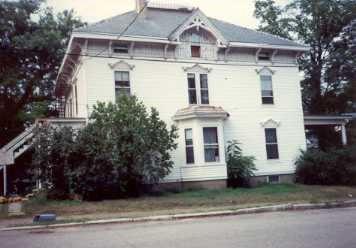
In April of 1879 Levi Elder bought a large parcel of land at what is now the corner of Lexington and W. Concord streets from the heirs of Thomas H. Cushing. Mr. Elder divided the land into smaller lots, and in Aug. 1881 he sold this lot to Charles H. Hobbs, who was the son of George Hobbs who lived across the street at #32. Charles Hobbs built this house which he sold to Sarah Fisher in 1883. The Fisher family did not live here but rented to others including Dr. Charles Tasker, a dentist, who lived here for about ten years until he built his new house at 35 Cushing Street.
In 1909 the property was sold to Scott Caswell, the blacksmith who had previously lived at 31 Lexington Street. Scott Caswell died in 1919 about a month after he had deeded the property to his wife Emma. For many years Emma lived at #21 and her son Ralph W. Caswell, who was superintendent of the State Police, lived at #19. In 1945 Emma deeded the property to her son Ralph. In 1952 Emma Caswell entered a nursing home and Ralph’s son Philip, who was state probation officer, moved into #21. In 1969 the Caswell Family sold the property to Joseph E. Vitko, Jr.
20 Lexington Street and 22 Lexington Street
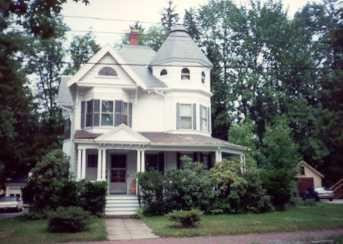
These identical houses were built on part of the land Eli Brewster bought from Caroline Cushing in 1869. Eli and Freelove Brewster sold the lot which is now #20 and #22 for $2700 to Fred Bradbury and Arthur Whitcomb in 1894. The following year Whittemore and Bradbury drew up two deeds: 1) Bradbury sold his part of the southerly half of the lot (described as land with buildings) to Whittemore; 2) Whittemore sold his part of the northerly half of the lot to Bradbury (described as land only on the deed).
Fred and Ellen Bradbury built their house at #20 about 1895. Fred was a manager of Haskell, Adams and Co. on Chestnut Street, which was a Wholesale Grocer, Importers of Tea, and Receiver of Famous Ivory Flour. In 1924 the Bradburys moved around the corner to 8 Richmond Street and house was sold to Dr. John E. Lawlor and his wife Helen C. Lawlor. At the same time, the Lawlors also purchased (in several packets of land) the land now comprising the large lot north of the house. Mrs. Lawlor owned the property until 1955, when she sold it to Robert and Ruth Sebris. They sold it in 1957 to Dr. Robert F. and Mary Helen Wilson. He was a long-time pediatrician, founder of Dover Pediatrics; she was a well-known champion tennis player and distance runner in the Seacoast. The current owners (Elizabeth and William Gillis) purchased the property in 1976.
Arthur and Caroline Whittemore had lived across the street at #19 Lexington until the house at #22 was ready for them, early in 1894. Arthur was a lawyer, notary public, vice president of Strafford Savings Bank, and mayor of Dover from 1901-1903. (He was also the trustee of George Buzzell’s bankruptcy proceedings.) The Whittemores had a daughter, also named Caroline, who attended Radcliffe and was employed for a while at the Hanover, NH Library.
After the death of her parents, Caroline sold the house to Henry Archibald in 1940. He, in turn, sold it to Oscar and Arvilla Bryant in 1942. The current owners bought the house from the Bryant heirs in 1992, one of whom was Barbara Bryant, who was church secretary at St. Thomas Episcopal Church for many years.
15 Lexington Street
This lot was also part of the land purchased by Levi Elder in 1879. That same year he sold this lot to George Brown, who built this house. In 1880 the house was sold to John S. Wheeler, a shoecutter, who lived here for about eight years and then sold it to Ada F. Gowen. Ada was the wife of Edwin A. Gowen, who was in the wholesale fruit and produce business and also owned a grocery store on Locust Street. Edwin Gowen died in 1944 and left the property to his granddaughter Mrs. Barbara Knox.
Barbara Knox sold the house to Robert Smith in 1946 and a year later he sold it to Doris Foster the wife of Philip Foster, an insurance agent. The Fosters lived here for 13 years and then sold to Beverly Morrison, who not long thereafter, married Lloyd Jordan, an engineer at General Electric. The Jordans sold the house to Thomas J. Flygare in 1978.
11 Lexington Street
In May 1879 the heirs of Thomas H. Cushing sold lot #4 of the original plan of lots drawn up in 1859 to Julia Whitehouse, the wife of Ephraim Whitehouse who ran a grocery store on Washington Street. Mr. Whitehouse built this house shortly thereafter and Ephraim lived here until his death in 1922, when the house became the property of his daughter Edith. A few months later Edith married J. Edmond Allen, a mill worker and they lived here until 1957 when Edith sold the property to Dyson W. Kring Jr., and engineer at General Electric. Two years later Mr. Kring sold to William L. Plummer, a sales representative for Moore Business Forms who was the son of Lloyd F. Plummer who lived at #33 Lexington Street. Mr. Plummer lived here until his death in 1992.
7 & 9 Lexington Street
Orrin J. Palmer & Frank I. Corson bought this lot (Lot #3) from the estate of Thomas H. Cushing in 1885 and built this duplex house. The two men were masons and were in business together (Palmer & Corson). They operated the business from this location. Mr. Palmer lived at #7 and Mr. Corson lived at #9. Both men lived here until they died, Mr. Palmer in 1917 and Mr. Corson in 1924.
The property passed to Mr. Corson’s daughter Ruth, who was principal of Peirce School. After Rue Corson died in 1968, her estate sold the house to Leo Vachon, Jr., a contractor who sold it nine months later to Leonard and Shila Clay. The Clays converted the building into a number of apartments. The Clays lived in one of the apartments (9A) and rented the rest. In 1979 the Clays sold to Stephen Oppenheim who replaced the Clays in 9A. In 1987 Mr. Oppenheim sold to Robert Purcell who then occupied unit 9A.
10 Lexington Street
George and Hattie Buzzell bought the land here in 1890 as a result of the court case when Caroline Hurd’s grandchildren sued her. According to the deed, the conveyance is made upon the condition that the front of the any house erected on said tract or lot of land shall be 25 feet from the easterly side line of said Lexington Street.
George Buzzell built the house and moved in by 1892. He advertised his business as Buzzell, The Shoe Man Sells The Dover $3.00 Shoe, Best in the World; unfortunately he went bankrupt by January 1899, and the house was conveyed to Hattie in July of that year as a protection during bankruptcy proceedings.
The house has only had four families own it in its 100-year existence. Charles Carpenter Goss and Winifred Lane Goss bought the house from Hattie Buzzell in 1905. Winifred sold it to Walter Carlton in 1917, who sold it to current owners Greg and Catherine Kageleiry in 1969.
5 Lexington Street
Lot #2 (5 Lexington Street) was purchased by William Moore in 1885. He was in the dry goods business and operated stores in both Dover and Rochester. Mr. Moore built the house that is now on the lot in 1889 and lived there until 1923 when he sold the house to George J. Foster and moved to 171 Washington Street. George Foster did not live in the house but rented it to others.
George J. Foster died in 1928 and his daughter Bertha Glidden inherited the house and moved here with her husband Harry Glidden a vice president of I.B. Williams & Co. When Bertha Glidden died she left the house to her nephew Robert Foster subject to a life estate to her husband Harry who died in 1971.
In 1972 Robert Foster sold the property to John Guy the president of Merchant’s Savings Bank, who still lives here.
4 Lexington Street
This house was built after the Cushing mansion was sold to the Neallys in 1912. Frances E. Cushing, widow of Thomas lived here at least from 1917 on. The house was sold by Thomas C. Dunnington to Frank B. W. Brown in January 1946; he then sold it to Frederick E. and Gertrude Richardson in March of that year. After his death in 1954, he passed it to his son, Fred, a long-time insurance agent in Dover who started the Richardson-Webb Agency, now the R-W Agency. Other owners were George and Janet Francis; Quintin and Annette Taylor, and Royal and Shirley Wales. Wales was employed at Clarostat. They sold it to current owners Roger and Linda Hayden in 1994.
250 Washington Street
Richard Ross, master mechanic at the Cocheco Print Works from 1846-1868, purchased this lot on the corner of Lexington Street in 1880 when he retired from a job in Massachusetts. Ross had always like Dover during the 22 years he lived here and decided to make it home once more. At age 63, he moved back here and built this home ca. 1885. Ross served as a two-term mayor, 1885 and 1886, and lived here until his death in 1897. His wife Dorcas remained here until she died at age 88 in 1902. The house was sold to physician, Edward C. Batchelder (1875-1952). The doctor had moved to Dover in 1906 and established a practice in the Masonic Temple. The doctor’s daughter Edna married Melvin Richardson, son of City Hall architect J. Edward Richardson, and the young couple lived here also from about 1933.
243 Washington Street
This New Englander, built for Hanson O. Reed, was built in 1878. Reed worked as a weaver and loom-fixer for Cocheco Mfg. Co. and purchased this lot from Almanzor Towle. After his death in 1916, his widow Mary Helen lived here until 1929. At that time, this house was purchased by Dr. Batchelder. It too was sold by Edna Richardson in 1971.
247-249 Washington Street
In 1878, on this land previously owned by Thomas H. Cushing and later by Almanzor Towle, William B. Twombly built this duplux. Twombly was a peddler and patent medicine dealer who died shortly after the house was built. Widow Ann Twombly lived here until 1908 and the property sold to Frank Bennett. Dr. Edward Batchelder purchased the home in 1928 and the doctor’s daughter, Edna Richardson, sold it in 1971.
254-256 Washington Street
This large white duplex was constructed ca. 1876-77 by Charles A. Faxon, grocery store owner and lumber dealer. For the first decade after building his house, Mr. Faxon loved to sit in a large window and watch the activity down Washington Street at Central Square. After Richard Ross built his house next door at #250, Faxon’s view was still unimpeded: all was well. Then an argument, reasons unknown, erupted between the two men and as a result of this feud, Mr. Ross erected a high fence between the two houses, completely cutting off Faxon’s view down the hill. Ross and Faxon never spoke again. When Richard Ross died in January 1897, neighbors remarked that the fence came down that next spring.
Charles die in 1910; his wife Ellen in 1913. Faxon’s nieces Grace Perkins and Hittie Ham, lived in the house during the 50’s; in the 60’s it was sold to the Leon Yeaton family by Dorothy Ham and in 1970, to residents of Durham.
255 Washington Street / The Varney School
The law firm of Burns, Bryant, Hinchey, Cox and Rockerfeller P.A., currently occupies the brick edifice built in 1861 as the Washington Street Primary School. Thomas H. Cushing donated the land to the city and the schoolhouse was constructed with four classrooms able to house 188 young scholars. In 1882, the school was renamed the Varney School in honor of Judge John R. Varney. Varney, an ex-math professor at Dartmouth, had been a prominent local lawyer, editor, politician, and school board member in Dover. He died in the 1882 fire that destroyed the Washington St. Baptist Church. In 1890, the Varney School was designated as a training school for high school graduates wishing to become teachers; many young Dover women started their teaching careers in the Varney classrooms. The Varney School closed in 1953 when the new Woodman Park School opened, and by 1958 had become the offices of lawyers Burns, Calderwood, Bryant and Hinchey.
261 Washington Street
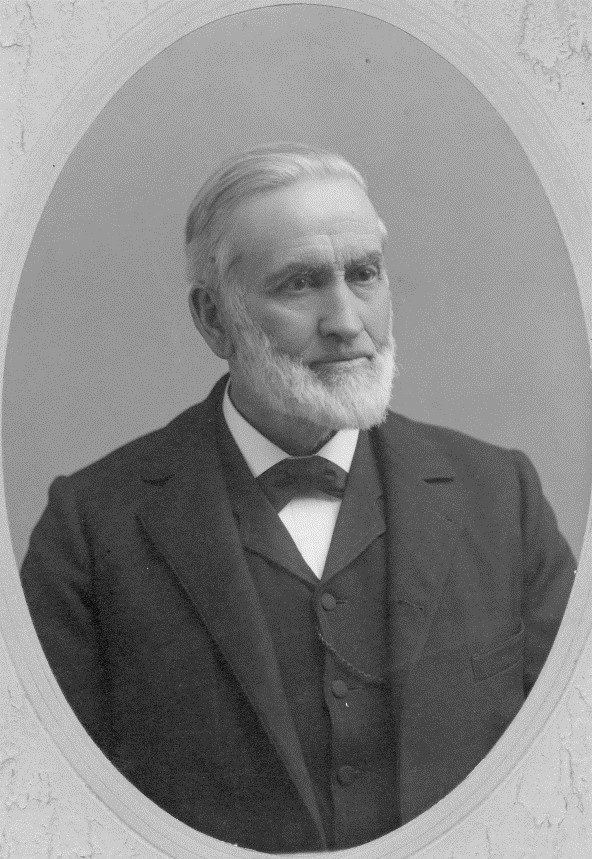
This residence was built before 1859 for Joseph T. S. Libbey. Libbey moved to Dover in 1847 to become the foreman at the Dover Gazette. In 1849, he held the same position for the Morning Star. With partner John R. Varney, Libbey purchased the Dover Enquirer in 1868 and became that paper’s publisher. In 1880, Libbey and Varney also acquired the Dover Daily Republican. Joseph Libbey retired from journalism in 1886 but continued to work as the Station Agent for the Folsom St. Station of the B&M. Libbey was also the father of four, a Civil War veteran, a representative to the N.H. Legislature (1878-1880), clerk of the Dover Common Council for 7 years, and selectman from Ward 3 for several years. He was also a member of the G.A.R., the Sawyer Post, the Red Men, the Masons, and the Knights of Pythias. After his death in 1907, the house belonged to the Lemoyne family for approximately 23 years, then to the Frewen family for about 26 years. It has been owned by Spero Theodoras since 1966.
265 Washington Street
Gustavus Horne, a clerk at the Dover National Bank, built this home ca. 1867 but sold it in 1871 to Moulton B. Smart and his wife Ann. Smart died in 1875 but his widow remained here until 1897. During the early 1900’s, it was owned by Nellie and George Lemoyne, but it was sold in 1917. It was then owned by Frank and Minnie C. Gray, then by Frank and Olice S. Gray, then by the Soteropoulos family. The Michael Hearn family purchased the house in 1985.
258-260 Washington Street
Built during the mid-1870s, the house, now a duplex, was the home of Benjamin Mason Nealley (1811-1888), a mill overseer who had moved to Dover in 1824. Nealley soon moved away to accept manufacturing jobs first on South Berwick, then in Laconia, and later to Salem, Mass. In 1877, his health failing, Nealley moved back to Dover and this homestead. Nealley had been active in the anti-slavery movement, acting as a conductor on the Underground Railroad that passed through N.H. to Canada; he was also a radical temperance advocate.
His eldest son Benjamin Franklin Nealley (1839-1910) started a dry goods store at age 18 and continued for 36 years at a retailer. B.F. Nealley inherited the home in 1888.
B.M. Nealley’s youngest son John Haven Nealley (1853-1928) worked as a clerk in his brother’s store until 1893 when he purchased the business and B.F. retired. Both Nealley brothers served as mayors of Dover (B. Frank 1889-90; John 1904-05) and as N.H. State Senators. John H. Nealley married Thomas Cushing’s daughter Emma in 1877 and resided at #230.
In 1892, B. Frank Nealley sold this house to Frank Stone who resold it in 1907 to Charles A. Faxon. Faxon’s nephew, J. Herman Ham, inherited the house in 1913 and it remained in that family until 1968.
270 Washington Street
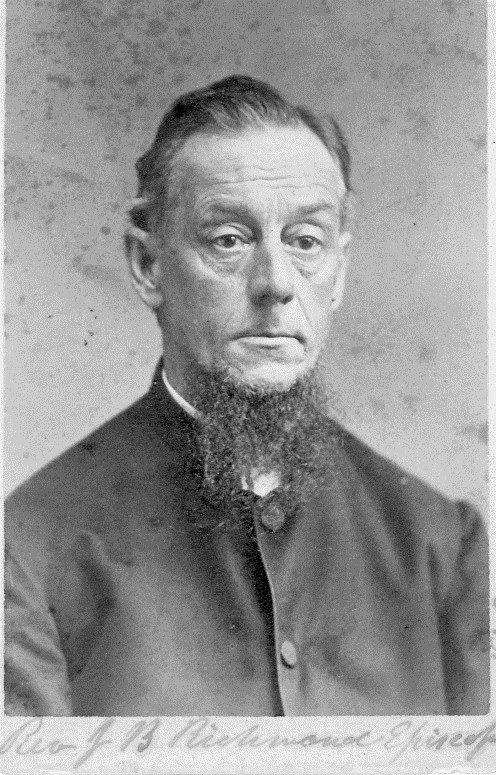
This home was the residence of Episcopal Church minister John B. Richmond for whom Richmond Street was named. Rev. Richmond was pastor of St. Thomas Church from 1868 – 1876 and the house was constructed ca. 1867. Originally land owned by Greenleaf Clark, the lot with buildings was sold in 1867 to Israel Ham for $4000. Ham sold the premises in 1869 to Deborah Richmond, the minister’s wife, for $5200.
During his rectorship, Rev. Richmond presided over major interior alterations to the wooden Central Street church and enlarged its seating capacity. He resigned from his post April 29, 1876. The home was sold to Amanda Pickering in 1887 and it remained in this family until 1940. Mary Theodoras acquired the property in 1955.
RICHMOND STREET
Richmond Street was the last one established in this area, circa 1887. At that time on Washington St. were the two adjacent homesteads you still see today: the Nealleys at 258-260 and the Richmonds at 270. The stories for these dwellings are given above. The lots for these homesteads were long and narrow, extending from Washington St. southward about 440 feet to where houses 18-20 and 21-23 Richmond St. are today. To establish Richmond St. the city took a strip of land from each lot and then extended the street through other lots to join West Concord St. Soon lots were laid out and they generally had 70 foot frontage on the street.
As you enter Richmond St. you will notice a big difference from the properties you saw on Lexington St. The lots are smaller and most of the houses were built as duplex dwellings. Most of them were built between 1888 and 1906. Quite often the owners lived in one side of the duplex and rented out the other side.
Note the differences between Lexington and Richmond Streets in width and sidewalk materials. Richmond was designed as a duplex/residential area.
1 RICHMOND ST.
As you enter Richmond St. and pass 270 Washington St. on your right, you will notice that the rear portion of that house is No. 1 Richmond St. The old homestead has been divided like that for many years and has had a lot of tenants. There are other dwellings like this in Dover where one building has two different street addresses.
3 RICHMOND ST.
Directly behind No. 1 is a single dwelling: No. 3. On the 1888 Birdseye of Dover a barn for 270 Washington St. appears in this location, so there is a story that this is a converted barn. Maybe so. Anyway, in 1916 a young medical student by the name of Roland J. Bennett purchased the property for $4,000. In 1918 he graduated from Yale Medical School, served in the Medical Corps in World War I for a short while, and returned to No. 3 to live with his mother. In 1919 he married Olive Hall and they raised four children here.
Dr. Bennett had his office way down on Washington St. He served as chief of staff and later as chief anesthetist at the Wentworth-Douglas Hospital, and was very active with local fraternal organizations and with the Dover Baptist Church. His two sons became missionaries: Dr. John to South Africa and Robert to Brazil. Dr. Bennett died in 1975 and the property was sold two years later and has been resold several times since.
7 RICHMOND STREET
Currier W. Langley was a carpenter in Dover as early as 1869 boarding on Union St. During the 1880s and 1890s he purchased several individual lots in the West Concord and Richmond Streets area. It looks as though he would build a house on a lot, sell it and then move on to the next one.
In 1890 he bought the lot here at No. 7, probably built the house and lived here until moving to 335 Washington St. in 1895. It is known that he built the Baptist Parsonage at 14 Richmond St. in 1905 and apparently was active with his son Frank until the 1920s. Frank continued as a contractor until the 1950s.
Michael Cavanaugh bought the property in 1906 and it was in that family until 1937 when the Quinn family bought it, and they were here until the 1970s. Sarah Quinn was the proprietor of the Quinn Apparel Shoppe in Franklin Sq. for a number of years.
6-8 RICHMOND ST.
Across the street from No. 7 is No. 6-8. The 1892 map shows two houses on this side of the street with the name R.Clough on them, so they were probably built soon after the street was established and would be Nos. 6-8 and 10-12. A little later we find No. 6-8 in the Faxon/Ham families (see reference in adjacent property 258-260 Washington St.). It was in these families until 1968 and has had a great number of occupants over the years. Perhaps the longest tenant at No. 6 was Arthur Bowles, a contractor, from the 1920s to the 1940s.
11-15 RICHMOND ST.
Back on the right side of the street is No. 11-15. This consists of the duplex on the street and the second building behind. William L. Emerson moved here as early as 1898. The Emerson family lived in No. 15 and rented out No. 11. In 1957 they sold the property to Herbert Sprague whose family lived in the duplex and the building in the rear was Sprague Floor Coverings. The business has recently expanded to other parts of the city.
10-12 RICHMOND ST
Go back across the street. As mentioned above under No. 6-8, this was an early house on the street. Albert Clough lived on No. 10 as early as 1892, and in 1896, sold the property to Edward and Elizabeth Clark. Mr. Clark was an engineer with the Boston and Maine Railroad, and they also lived in No. 10. Clark descendants sold the property in 1944 to Peter and Stella Athas who in turn sold to George Koutrelakos in 1947. The Koutrelakos family lived in No. 12 and sold the property in 1984.
17-19 RICHMOND ST.
On the right side again, perhaps the most illustrious early resident of the whole street lived at No. 17. John Tapley Welch was here from c. 1898 until he died in 1919 and his widow, Elizabeth was here for many years afterward.
Mr. Welch was a product of the Dover schools and Dartmouth College. He started in newspaper work and was affiliated with several papers. He was clerk of the Dover police court in 1881-1882, register of probate for Strafford County from 1882 to 1887, a member of the school board 1885 to 1888, in the State Legislature in 1889 and State Senator in 1896. From 1898 until 1916 he was postmaster of Dover, and Dover city treasurer from 1915 until his death. After the turn of the century and for about two decades, the tenants for No. 19 were Charles Manock and his wife Bertha, a teacher.
The current owners have been in the house for almost three decades.
14 RICHMOND ST.
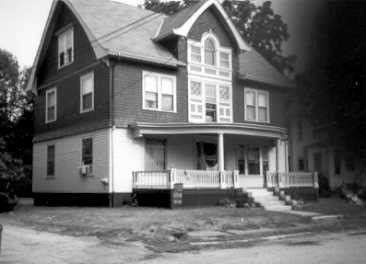
Across the street from 17-19 is No. 14. In 1902 the Washington Freewill Baptist Society (forerunner of the Dover Baptist Church) bought this lot from Charles Faxon for $1200. In 1905 they contracted with C.W. Langley to build this single dwelling for $2784. Rev. Amos E. Wilson moved in the next year and it was the Baptist Parsonage until 1977. Evidently the pastors living there spread the Baptist doctrine because in 1923, for example, there were 6 families on Richmond Street and 7 families on West Concord St. associated with the church.
21-23 RICHMOND ST.
Crossing the street again we have No. 21-23. This is one of the lots Currier W. Langley bought in 1894 and we can assume he built the house. The property stayed in the family until 1945 when Charles Kageleiry bought if from Frank M. Langley. Frank had not lived there all that time, however, because he was a contractor with his father, Currier, over at 335 Washington St.
Several members of the Kageleiry family lived at No. 23 until the property was sold in 1978. Charles Kageleiry was the proprietor of the Washington Street Fruit Market and about 1950 he started the Kageleiry SPA at 113 Washington St. He, George, and other family members ran it until about 1972. This was a great meeting place for Dover high schoolers since the high school was only a block away (where Dover Middle School is today). Meanwhile James K. was starting his long career with New York Life Ins.Co.
18-20 RICHMOND ST.
Across the street from No. 21-23 is a duplex with an interesting story. William H. Rines, an engineer, invested in land in this area in the 1870s. This lot was made up by two purchases. In 1889, Roxanne, wife of William, and Ellen Rines bought the front portion from B.F. Nealley, and in 1890 Roxanne bought the rear portion from C.A. Faxon. The duplex was here in 1890, because, for some reason, Roxanne and Ellen swapped deeds in April of that year splitting the lot and house down the middle. Roxanne got the north half (No.18) and Ellen got the south half (No, 20). The Rines family lived here until 1938, after which it had three owners, the present owners residing in No.18 since 1962.
25-27 RICHMOND ST.
Crossing to the right side again we find perhaps the oldest duplex on the street. The 1888 Birdseye view of Dover shows a house in this location, and the 1892 map shows a house labeled J.C.Varney~ here. Actually, John C. Varney had died earlier, but his widow along with Alice J. and Helen C., a teacher in the Hale School, were here in 1890 and they lived in No. 25 until 1913 when Mrs. John C. died. Then, for several years after 1928 the Allen family was in No. 25. Gladys, a nurse; Myrtle, a teacher in several Dover schools; Ruth; William, a Boston and Maine Railroad employee, and wife Etta, all lived here.
From 1936 to 1968 the property was sold six times, the present owners purchasing it in 1968.
22 RICHMOND ST.
Across the street for the last time, we find a single house. This may have been the last house built on the street. In 1920 Ralph and Sarah Emerson owned it, selling it to Herbert and Emily Sprague in 1951. The Spragues sold it in 1970 and it has been resold eight times since that time, the latest transaction in 1998. A lot of different families have lived here over the years.
West Concord Street
West Concord Street developed as a lovely residential neighborhood, close enough to walk to many of the in-town businesses where the street’s residents worked, but far enough removed from the “city proper” to be considered Dover’s suburbia in the last quarter of the nineteenth century. A majority of the homes on West Concord Street were built as large, comfortable duplexes and, while a few were owner-occupied, most were not. But it was not a transient neighborhood: we find many renters stayed long-term, some for decades. West Concord Street’s role as a true middle-class Dover neighborhood emerges by looking at some of the professions of its residents during the 1880s and 1890s: chef, apothecary, salesman, overseer, railway superintendent, vocalist/pianist, shop owner, engraver, grocer, letter carrier, teacher, nurse, insurance agent, dressmaker, dentist, doctor, tinsmith, carpenter, teamster, plumber, and stenographer. The street reflects a true microcosm of a small city’s microcosm of a small city’s professional, trade, and service occupations.
10-12 West Concord Street
This duplex was built in late 1896 by two owners, the Halls and the Frarys. The lot line ran exactly down the middle of the house, dividing it into two identical, conjoined halves. Grace and Isaac Hall occupied #10 and Fred and Martha Frary lived in #12. Frederick Frary was co-owner of Littlefield, Frary and Company Stoves & Tinware at 58 Washington Street. It appears both families lived in the duplex until Isaac Hall’s death in January 1911. The Frarys then purchased the whole house and began to rent #10 to tenants. Their children, Marjorie and Stanley, sold the home in 1958 to Edward and Eugenia Everett. Mrs. Lorraine’s Kindergarten was started in this house in 1965 and the home was sold to the kindergarten’s owner, Lorraine Martuscello, in 1969. The pre-school closed its doors after 34 years in June, 1999.
11-13 West Concord Street
One of the oldest houses on the street (ca. 1881), this duplex was built by John Ingraham, a clothing manufacturer on Locust Street, who bought this lot for $425 with his partner William L. Hobbs from Nathaniel Hobbs in August 1881. Nathaniel had purchased the land from Albert A. Pike in October 1880. Ingraham lived here until 1887 when he sold to John Bartlett. Bartlett was involved in numerous real estate deals in the area and by 1899 was bankrupt. Samuel Bartlett, who had received the property here after the proceeds of the foreclosure auction, sold the house in 1907 to Mary Jones. Jones sold in 1912 to Dellie V. Reynolds who rented it out for many years. In 1948, the home was sold to Fred K. Small and in 1949, to John and Iona Redden. It sold once again in 1979 to Clarence James Sr. and then passed to Clarence James Jr. in 1989. Since that time the home has had only one other owner.
14-16 West Concord Street
This home was built, probably by carpenter Currier Langley, ca. 1886. Langley had purchased this lot from Levi Elder in 1885. Langley lived here only briefly and then moved to Richmond Street. Langley may have been the contractor for several of the homes featured in this year’s Walk as his name turns up on many property deeds in the neighborhood. In 1887, Currier and Alice Langley sold the house to Charles Porter, an engineer at the Cocheco Manufacturing Company. Porter’s widow Sarah lived here through 1921 on the #14 side. In 1924, Porter heirs sold the house to Charles H. Hayes and his daughter Catherine B. (Mrs. Samuel) Ross. Hayes died in March 1953, his wife Judith Bennett Hayes in June 1969, after which the house was owned solely by Catherine Ross. Mrs. Ross, an avid Red Sox fan according to her obituary, died at age 99 in February 1997 and her son Samuel then sold the property to the present owners.
15-17 West Concord Street
In 1887, Alfred A. Pike sold land here to Valentine Mathes who built this duplex. In 1889 Mathes sold it for $1800 to George J. Foster, publisher of Foster’s Daily Democrat, who was renting here already. Foster only lived here for a couple of years before selling it to the Philbrick family in 1901. Next owner was Cora L. Burleigh in 1914 who then sold it to George S. Ham. Ham sold the house in 1936, to Frank and Minnie Gray. In 1948, the Grays sold the home to James E. and Anna Duffy whose daughter owns it still.
18-20 West Concord Street
Levi Elder sold land here to Calvin Chesley in the fall of 1885. Chesley built this house in 1886 and sold it in 1887 to Annie W. Baer. Mrs. Baier sold the home to Charles H. Hayes in 1925 and it then passed through the same successions of Hayes’ other property at #14-16 West Concord. (The Hayes family never occupied either of these dwellings.) Present owners have occupied the home since 1997.
19 West Concord Street
This home was built ca. 1888, probably by Currier Langley who purchased the lot from Alfred A. Pike for $500 in October 1887. The Langleys sold it in June 1890 to Isaac B. Lucas who was a brickmaker and farmer at Dover’s Upper Neck (the present location of Isaac Lucas Circle.) In 1919, Lucas’ widow Ellen sold the house to Judith Bennett Hayes and Charles H. Hayes. After Judith’s death in 1969, it passed to her daughter Dulcie. M. Ainsworth (see also #24-26 West Concord). George and Sharon Mourgenos purchased it in 1973.
21 West Concord Street
Alfred A. Pike sold this lot in 1889. The land changed hands a couple of times until Samuel S. Parker, administrator of the estate of Charles E. Webster, sold it to the Advent Christian Church for $850 in May 1905. The home here, called the parsonage, was constructed soon after and was used by the church’s ministers until 1953. A Crory family next owned the house, but only for a year. In 1954, it was purchased by Willard B. and Elizabeth L. Merrill who were residents for 23 years. Sine 1977, the home has had two additional owners.
22 West Concord Street
Mary Elder sold land here to Charles Sloan, a sketchmaker for the Cocheco Print Works, in 1889 and this home was built by 1890. Rosina Gear purchased it from Sloan in 1903. After Gear’s death in 1920, the property passed to Jennie Halpin. Miss Halpen was a dressmaker and a boarder at #22 since 1905. Rosina Gear (1833-1920) and Jennie Halpen (1876-1943) are buried in the same plot at Pine Hill Cemetery, but it is not known how they were related. In 1944, the house was purchased by Charles H. and Judith B. Hayes, owners of #14-16 (from 1924), #18-20 (from 1925), #19 (from 1919), and #24-26 (see below – from 1936). This house was inherited by their daughter Catherine B. Ross and sold after Ross’s death in 1997 to the present owners.
23 West Concord Street
The lot here originally was part of the land belonging to 35 Arch Street, the home of Alfred A. Pike. The single-family home here was constructed ca. 1933 by Herbert C. Hodgdon, a tinsmith who lived at 35 Arch. There have been five owners of the house.
24-26 West Concord Street
This home dates from about 1905, although the land was first sold in 1898 from Mary Elder to Fred Demeritt. Demeritt sold to Everett Chapman, a physician, and his wife Estelle in 1915. Chapman’s dentist brother Harry, lived in the other half. The brothers also shared office space at 77 Washington Street. The home was sold in 1936 to Charles H. and Judith B. Hayes, who at that time also owned three other properties on West Concord. Unlike their other houses, the Hayes family did live in this house. It was passed to their daughter Dulcie M. Ainsworth and then to their granddaughter Priscilla Sevigny.
28 West Concord Street
Mary Elder sold this lot to Sophia (Mrs. George) Boyden in 1890 and by 1892 the Boyden family were occupants of this home. Sophia’s son Frank, a bookkeeper, and his wife Rose also lived here and inherited the house after his mother’s death in November 1915. Frank and Rose both died in the early 1930s and the house was purchased by Arthur J. Jones who lived here from 1934-39. From 1941-58 the house was rented to Harold A. Holbrook, president of Strafford National Bank, who later bought a home at #4 West Concord Street. Jones’s heirs sold the property in 1959 to Peter J. and Gloria F. Duffy who owned it until 1987. This home was on the Dover Christmas House Tour and its interior was once featured in House Beautiful magazine. Since 1987 there have been two owners and the lot is currently being subdivided and a new home being built on the Arch Street side.
20 ARCH STREET
In 1913, George Varney, owner of a drug store on Washington Street, purchased several lots in Abbott Field, and built this large home. Varney had been a prominent local merchant for 40 years, a member of the State Legislature, the Dover School Committee, and a Public Library trustee. He retired in 1919 at age 65 and died in 1920. Son Lucius E. Varney, a patent attorney in New York City, inherited the home with his mother, Helen. Mrs. Varney died in 1933, and Lucius in 1955. In 1956, Irene S. Varney, administrator of the estate, sold the home to Alfred Catalfo, Jr. It remains the Catalfo home today.
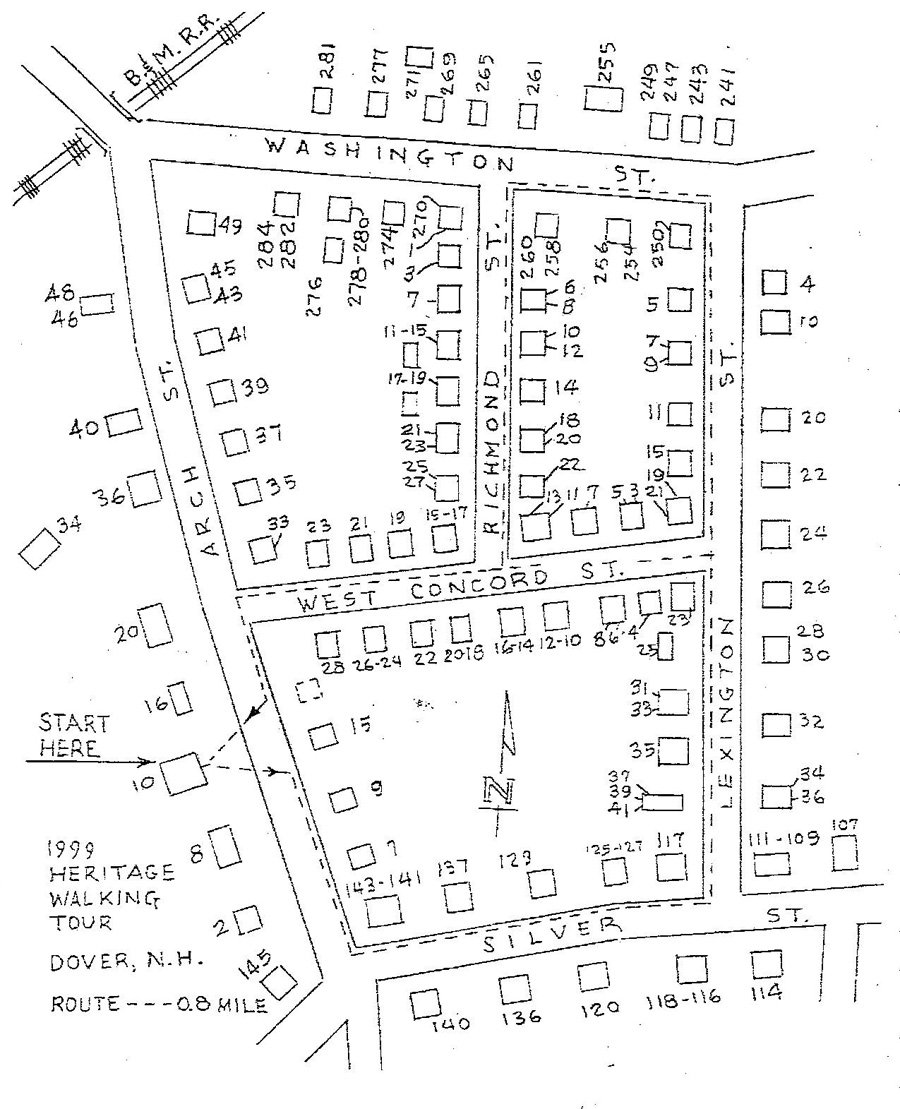
This historical essay is provided free to all readers as an educational service. It may not be reproduced on any website, list, bulletin board, or in print without the permission of the Dover Public Library. Links to the Dover Public Library homepage or a specific article's URL are permissible.

